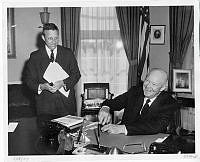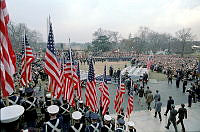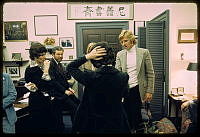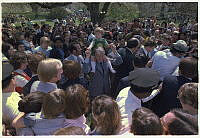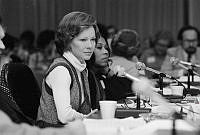Foreword; White House History
Copyright © Spring 2009 White House Historical Association. All rights reserved under international copyright conventions. No part of this article may be reproduced or utilized in any form or by any means, electronic or mechanical, including photocopying, recording, or by any information storage and retrieval system, without permission in writing from the publisher. Requests for reprint permissions should be addressed to books@whha.org
Across Lafayette Park from this journals office, Saint Johns Episcopal Church is known for good reason as the Church of Presidents. Designed originally by Benjamin Henry Latrobe for a rich parishioner, John Tayloe, the church was uninhibited by committee votes and stood in secular glory for nearly thirty years, until the addition of columns and a steeple brought it into conformity. Only on the interior does one still meet the liberality of the original builder.

President Lincoln preferred to slip in and out unnoticed from services at Saint Johns Church.
Most of the nations presidents have worshipped at Saint Johns from time to time, thanks to its convenience to the White House and a history of compelling preach- ers. President Abraham Lincoln, who regularly attended New York Avenue Presbyterian Church in Washington, liked to cross Pennsylvania Avenue alone, enter Saint Johns Church unnoticed through the outside door pictured here and ease into pew 89 for Evensong. Before the service was ended, remembered the Rector Rev. George Williamson Smith, he would slip out as quietly and unostentatiously as he had come.
Pew 89 at historic Saint Johns is a Lincoln site in Washington as is, of course, the White House. Indeed, the capital is filled with Lincoln places, as our authors show in this second number of the White House Historical Associations commemoration of Lincolns administration. Harold Holzer takes us inside Lincolns White House while Anthony Pitch describes the chaos of the assassination and its aftermath. Michele and Clifford Krainik have drawn together and analyzed here for the first time photographs taken of visiting native Americans after their 1863 meeting with President Lincoln in the East Room. I have gone to the Confederate capital, Richmond, to find out how the president of the Confederacy lived in his official house. White House curator William G. Allman introduces our readers to the revised Lincoln Bedroom, redecorated with
an eye to evoking Lincolns White House.
In planning our two Lincoln issues we were reminded constantly of the monu-mental place the Civil War or Lincoln years hold in the history of the White House. The question was for a long time where to begin. This we believe you will find makes an interesting companion to the previous number, also on Lincoln.

President Lincoln sat in pew 89, the last pew in the back corner beside the door.














